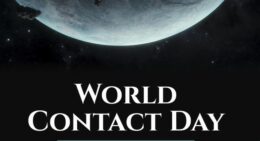by Charles Lear, author of “The Flying Saucer Investigators.”
 While the U.S. Air Force began its UFO investigation under the name of Project Sign in 1948, not long after Kenneth Arnold’s June 24, 1947, report of strange objects in the sky, private investigators didn’t get started until 1952. The first of these to rise to global attention was the International Flying Saucer Bureau, founded by Albert K. Bender. IFSB put out a quarterly publication called Space Review, and the group was taken seriously by fellow enthusiasts. The organization turned out to be short-lived. A little over a year after its creation, Bender mysteriously put an end to IFSB after telling the membership he had solved the mystery of flying saucers. He then announced that he’d been visited by three men wearing black suits and Homburg hats who’d threatened him into keeping silent about his discovery. The mythos of the Men in Black entered flying saucer lore and the Bender Mystery became a subject that is still being debated today. That is not the only legacy of Bender and his organization. To this day, after an attempt by Bender and his IFSB membership was made on March 15, 1953, to telepathically contact the occupants of the mystery craft being reported in the skies, March 15, is celebrated as “World Contact Day.”
While the U.S. Air Force began its UFO investigation under the name of Project Sign in 1948, not long after Kenneth Arnold’s June 24, 1947, report of strange objects in the sky, private investigators didn’t get started until 1952. The first of these to rise to global attention was the International Flying Saucer Bureau, founded by Albert K. Bender. IFSB put out a quarterly publication called Space Review, and the group was taken seriously by fellow enthusiasts. The organization turned out to be short-lived. A little over a year after its creation, Bender mysteriously put an end to IFSB after telling the membership he had solved the mystery of flying saucers. He then announced that he’d been visited by three men wearing black suits and Homburg hats who’d threatened him into keeping silent about his discovery. The mythos of the Men in Black entered flying saucer lore and the Bender Mystery became a subject that is still being debated today. That is not the only legacy of Bender and his organization. To this day, after an attempt by Bender and his IFSB membership was made on March 15, 1953, to telepathically contact the occupants of the mystery craft being reported in the skies, March 15, is celebrated as “World Contact Day.”
Albert K. Bender was an unusual character. He lived in his step father’s attic in Bridgeport, Connecticut, which had a bedroom and a den. He was employed as the chief timekeeper at the Acme Shear Company. It may have been a conscious nod to his profession or just an ironic coincidence, but Bender had twenty clocks in his living space that would all ring, chime, and clang every fifteen minutes.
The clock collection was just one of the many manifestations of Bender’s eccentric nature that increasingly expressed itself as he entered his late twenties. He was a fan of horror movies, ghost stories, and the occult, and he celebrated his interests by adorning his attic space with Halloween decorations, fake skulls, shrunken heads, rubber spiders, rubber snakes, and his own macabre paintings. When friends came over, he put on recordings of spooky noises and enjoyed showing off what he called his “Chamber of Horrors.” His living space and offbeat interests were interesting enough that an article was written about him which appeared in the May 25, 1952 Sunday Herald, a local Bridgeport newspaper. Flying saucers were added to Bender’s list of interests, and they eventually became his chief interest. Bender and some friends formed the IFSB in April 1952, and the membership quickly grew beyond the borders of Connecticut. The first Space Review, put out in October 1952, includes a list of representatives in 14 states and one in Ontario, Canada.
Bender wrote a book titled Flying Saucers and the Three Men about his time with IFSB and his visit by the men in black that was published in 1962. In the book, he describes a meeting that was held at IFSB headquarters in March where they voted on whether or not they would institute what was to be called, “World Contact Day.” All IFSB members would be asked to send out a telepathic message to the space visitors, presuming they existed, all at the same appointed time. Two members were opposed and thought the experiment would damage IFSB’s credibility. They resigned and “withdrew all financial support” the next day.
It was decided to proceed, and instructions were sent out via airmail to members around the world. On March 15, 6 p.m. EST, participating members were to clear their minds and mentally repeat the following memorized message:
Calling occupants of interplanetary craft! Calling occupants of interplanetary craft that have been observing our planet Earth. We of IFSB wish to make contact with you. We are your friends, and would like you to make an appearance here on Earth. Your presence before us will be welcomed with utmost friendship. We will do all in our power to promote mutual understanding between your people and the people of Earth. Please come in peace and help us in our Earthly problems. Give us some sign that you have received our message. Be responsible for creating a miracle here on our planet to wake up the ignorant ones to reality. Let us hear from you. We are your friends.
Not only do people still do this every year, but they can do so with a tune as a Canadian band, Klaatu, released a song using the above message in the lyrics called “Calling Occupants of Interplanetary Craft” in 1976 on their album 3:47 EST. The Carpenters put out a cover of the song using 160 musicians in 1977.